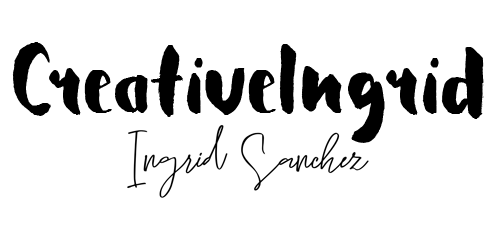Art as a Meditative Practice: Finding Peace and Mindfulness
When was the last time you got so caught up in something that you lost track of time? Maybe it was during a chat with a friend, reading a good book, or enjoying the beach. This state, called "flow," is when you're completely absorbed and feel a deep sense of satisfaction.
Creating art can bring about this same feeling, allowing us to escape the hustle and bustle of everyday life and dive into a world of creativity.
A Brief Story of How I Found Meditation
I've shared before that although art was always my first love, when it came time to choose a career, my family encouraged me to go in a different direction—one that provided more stability. So, I did, and years later, I found myself trapped in a career and job that made me deeply unhappy. In my search for help, I found yoga, and then meditation. I can honestly say, this saved my life.
Rediscovering what my body was capable of (I danced classical ballet for 12 years), and with a clearer mind, I returned to my first love: painting. It took me another four years to discover watercolor as my medium and to finally go back to art as a career. In case you're wondering, I was 34 years old.
 |
 |
| Mindful Tea, 2015 | One of my first illustrations using watercolors. | Inner Light, 2020 | This watercolor became cover of the book: 'Bodies Arising by Nicole Schnackenberg. |
Art as Meditation
If meditation brought me back to earth, art took me back to the stars.
I don’t know if that makes sense, but it’s how I feel. With a background in classical ballet, you can imagine how important movement is to me. So when I started painting, I found myself bringing that movement into my art. I’m not just talking about my hand; I mean really moving my whole body. I started stepping on the paper, splashing paint, and then I realized that I was meditating.
In 2012, I studied a Yoga Teacher Training, and my teacher used to tell us that yoga is meditation in movement. So when I started feeling the benefits of painting, moving, and breathing, I remembered this phrase. And I felt that I connected with something.
Since then, I consider my painting practice to be a form of meditation. It has been incredibly helpful during difficult times, such as the lockdowns during the pandemic and dealing with endometriosis pain for years.
 |
|
This is what I call 'Playful Watercolor,' a concept I talk about in my online class: 'Painting Flowers No.1: Loose and Abstract'. This was a 14-minute painting session where I simply play with leftover paint, focusing on being present without the pressure of creating a final piece. |
Things I Have Learned from Using Art as Meditation |
|
Being Present in the Moment |
|
Discovering Self-Expression |
|
Embracing the Journey |
Make art a part of your mindfulness routine to connect deeply with yourself and find calm in daily life. |

|
|
|
How to Practice Art as Meditation
Step 1: Get You and Your Space Ready for Mindfulness
I always light a candle or burn palo santo or incense before I start. It’s my way of telling my brain, “Here I am, ready to be.” Turn off any distractions, and set a timer if you have things to do later—this will give you peace of mind. Close your eyes for a moment and focus on your breathing.
Step 2: Stay in the Moment While Creating
Start making your art, whether it’s painting, drawing, or something else. Be mindful: if your mind starts to wander, gently bring your focus back to your art and your breath.
Step 3: Embrace the Present Moment
Don’t aim for perfect art. Instead of fixating on flawless outcomes, embrace the spontaneity of each stroke and the unpredictability of the process. Enjoy the unique results that come from being fully present.
Step 4: Keep Practicing
Make art and mindfulness a regular habit. Set a time that works for you and choose a realistic length. Start small; five minutes can be a good way to begin: light a candle, breathe, doodle, and you’re done! You can increase your time as you get used to it.
Every mindful moment, whether in art, with loved ones, or simply being with yourself, is valuable. Being present improves relationships and fosters self-connection.
Whether you're an experienced artist or new to the craft, try integrating art as meditation into your routine. Set aside time daily to create without judgment, and experience deeper self-awareness and calm.
Embark on this creative journey and discover the tranquility it brings. Give it a try and see where it takes you.

Comments
Simon McEwan said:
Just beautiful! And inspiring. It will help me when I paint … which I am doing more and more. Thanks so much Ingrid.